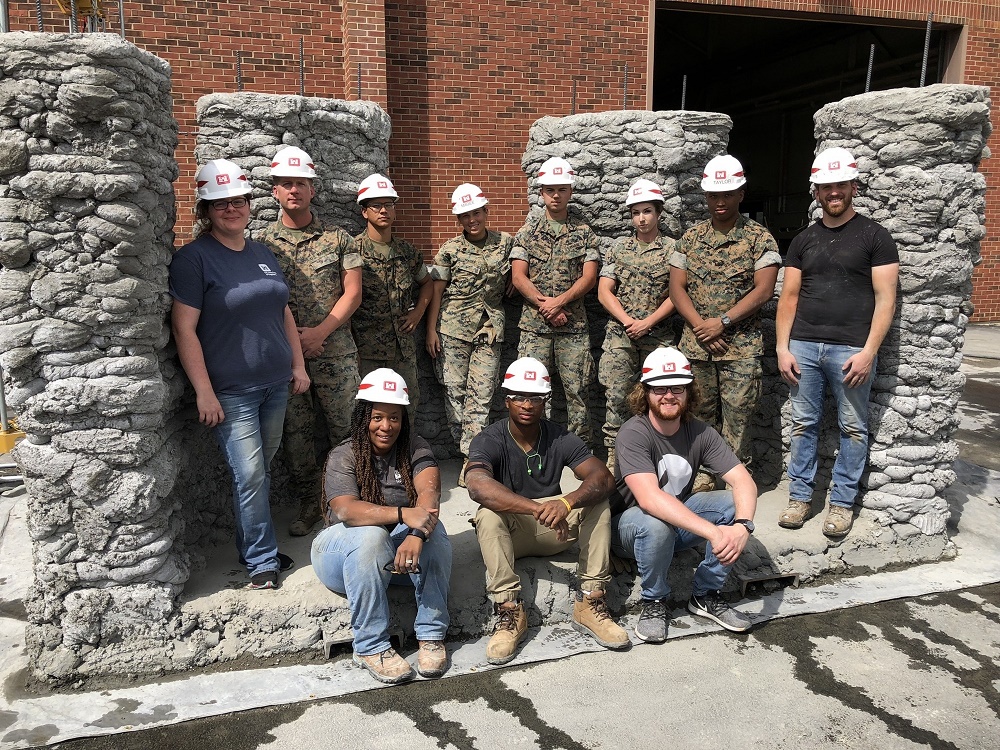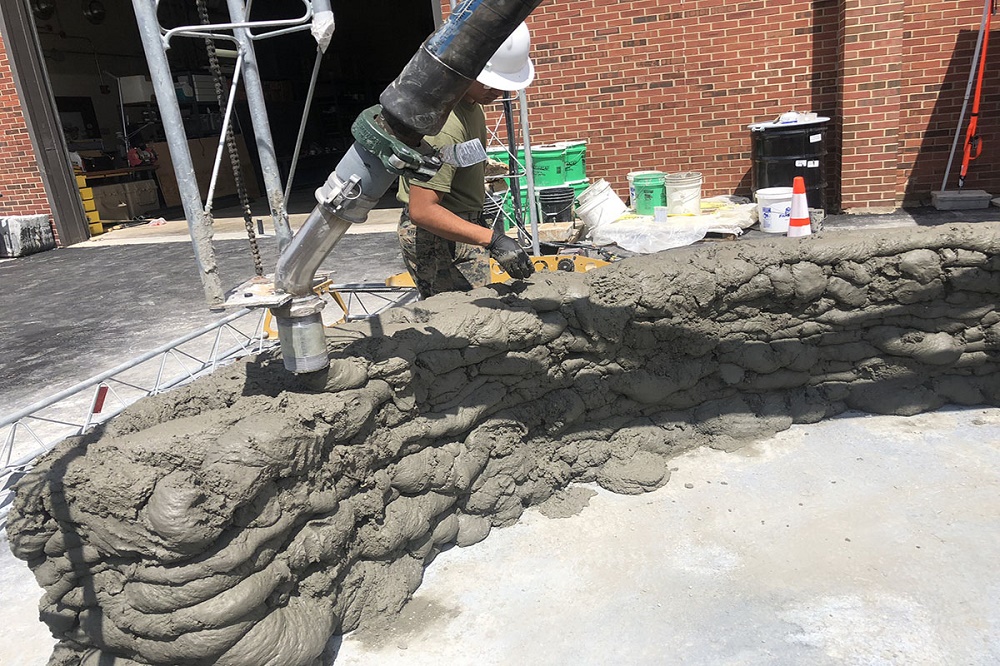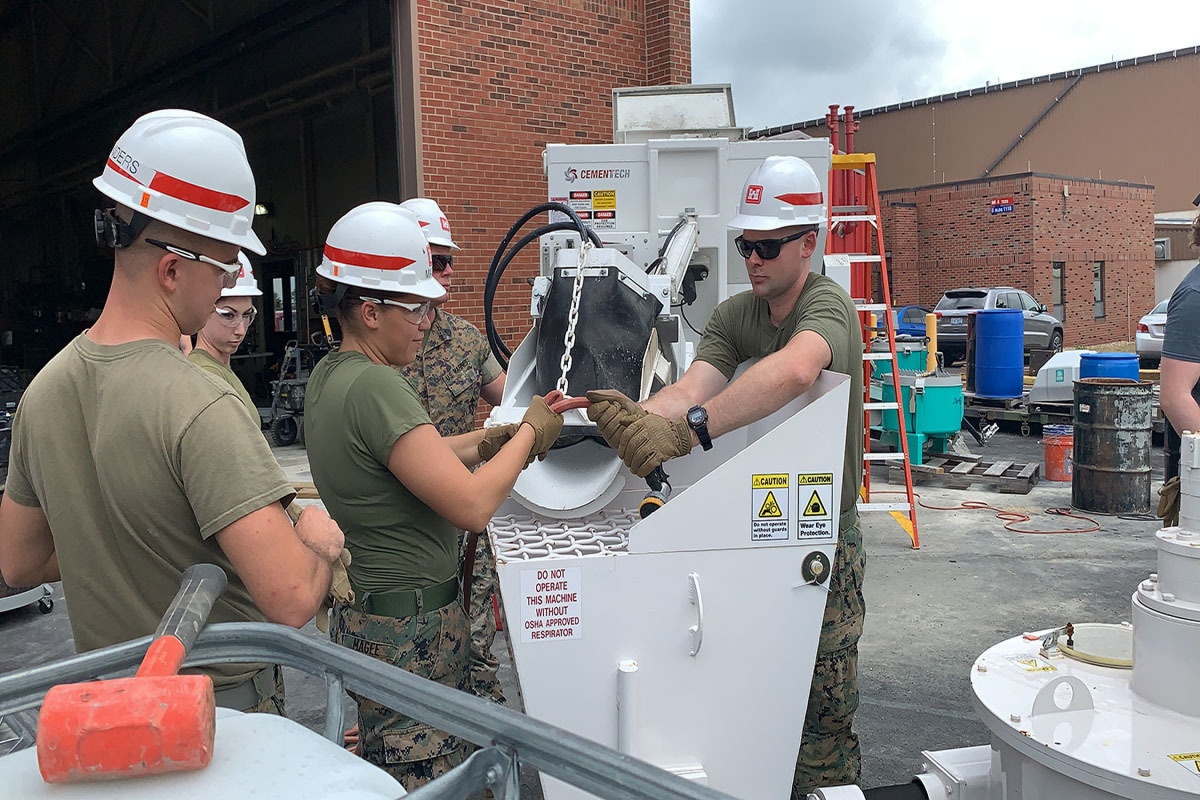China3D printingNet September 11, a team from the Marine Corps System Command (MCSC) and the U.S. Army Corps of Engineers (USACE) conducted the first coagulation at the Construction Engineering Research Laboratory (CERL) in Champaign, Illinois3D printingoperate.
During the test, the 7th Engineer Support Battalion (ESB) was also included, which tested a new continuous mixer and a 3-inch printing nozzle to manufacture buildings such as barracks and bridges.
“This is the first time we have used this system to print oversized things. It is now experimental, and we are working hard to promote technological development.” CERL’s Expeditionary Structure Automation Construction (ACES) project director Megan Kreiger said.

Marines from the 7th Engineer Support Battalion and engineers from the U.S. Army Corps of Engineers Construction Engineering Research LaboratoryCoagulation3D printingA concrete bunker was fiddling with during the exercise.Photo courtesy of U.S. Marine Corps/Staff Michael Smith
U.S. Army and Concrete3D printing
In 2017, CERL printed the first 512-square-foot concrete of the U.S. Marine Corps3D printingBarracks. After the CERL ACES project manager, Dr. Michael Case, explained that these structures showed the potential to build other infrastructure elements, such as obstacles, culverts and obstacles. “ACES provides the ability to print custom-designed expedition structures on-site using locally available materials on demand.”
One year later, USACE developed and obtained a patent for a concrete component that can be used for building components that require high structural strength.3D printing. Using this composition, USACE aims to accelerate the construction of buildings for a wider range of military and civilian operations.
Currently, according to ACES research,3D printingThe cost of the concrete structure was reduced by 40%, the construction time was reduced by 50%, and the use of concrete materials was reduced by 44%. In addition, additive manufacturing has been proven to double the strength of walls, increase thermal performance by 10 times, reduce manpower by 50%, and reduce overall labor requirements.

3D printing
Machine” alt=”American Ocean Concrete
3D printing
Machine” style=”color:#333333;font-family:’microsoft yahei’,’lucida grande’,’lucida sans unicode’, Helvetica, Arial, Verdana, sans-serif;font-size:14px;line-height: 24px;white-space:normal;” />
American Ocean Concrete3D printingmachine.Photo courtesy of U.S. Marine Corps/Staff Michael Smith
Hybrid and additive manufacturing
In the latest concrete3D printingIn operation, the Marine Corps and engineers added an inch to the original 2-inch print nozzle to facilitate faster structuring and reduce waste.Therefore, the team3D printingA bunker designed by ESB drafting and surveying combat engineers based on actual field experience.
Now, the ESB Marine Corps plans to build a traditional bunker similar to that used for explosion or demolition testing. Matthew Audette, Program Officer of MCSC Advanced Manufacturing Business Unit added:
“The new mixer we are testing is a commercial model of a mixer that is already in the Marine Corps’ airport damage repair kit. This means we don’t have to use a new one except for the printer. Equipped to do the job.”

The U.S. Marine Corps is assembling3D printingmachine.Photo courtesy of U.S. Marine Corps/Staff Michael Smith
China3D printingNet original article, please indicate the source for reprinting!
(Editor in charge: admin)


0 Comments for “The U.S. Marine Corps conducts its first concrete 3D printing practice”